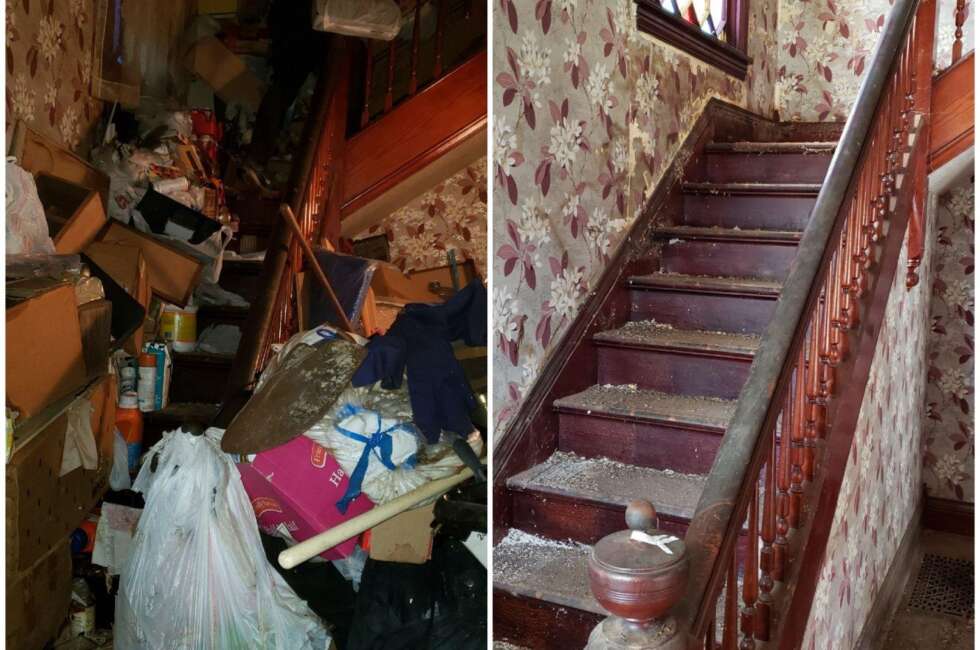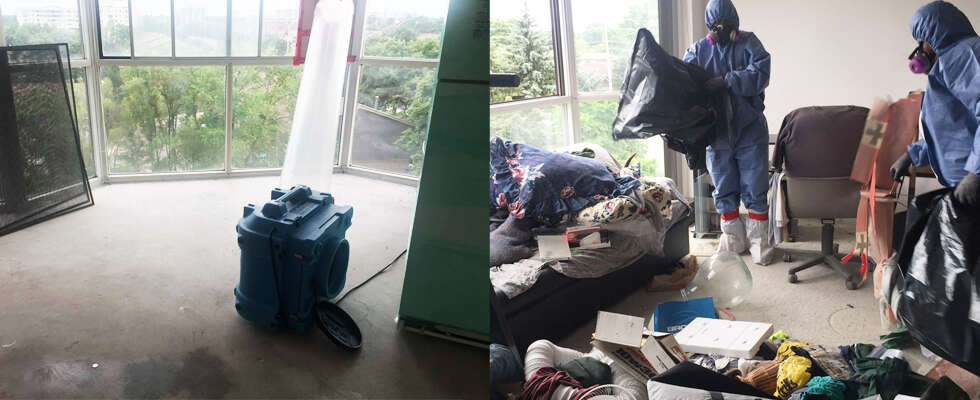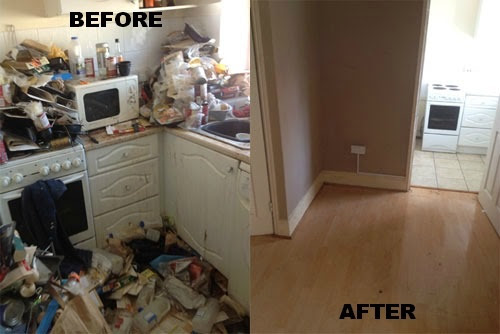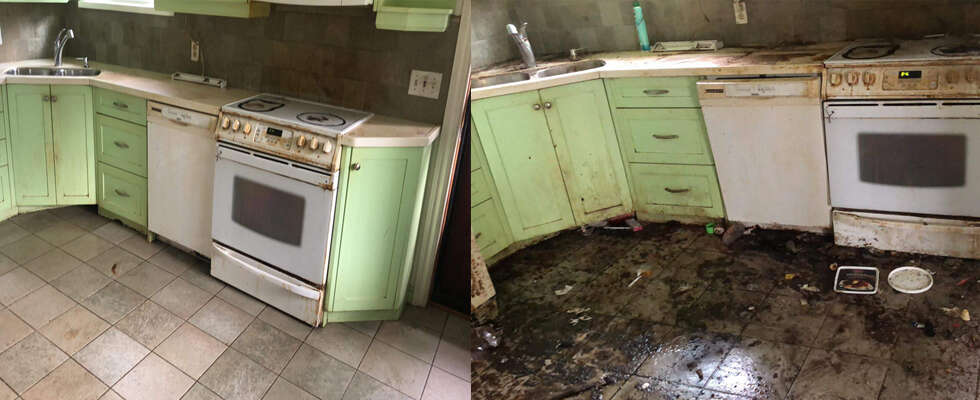What is Abandoned House Cleaning or Distressed Property Cleaning?
Abandoned homes and distressed properties can result from many reasons, such as: unruly or irresponsible tenants, relocation after natural disaster or other type of evacuation, foreclosure of the property, or inherited property that is severely damaged.
An abandoned house or distressed property usually has utilities such as electricity, water, heat, and air conditioning that have been turned off for some time. This makes a home susceptible to mold growth, which may also necessitate professional mold remediation service. Items such as food, pet food, cleaners, and chemicals can become spoiled or rotten over time, presenting biohazards and infestations of rodents, vermin, and insects. This is why professional abandoned property cleaning is needed, and it needs to be carried out by certified technicians with proper gear and protective equipment (such as gloves, goggles, coveralls, boot slipcovers, and N95 respirators). Trax Extreme Cleaning is an IICRC certified specialty and biohazard cleaning company serving Toronto & the GTA.
Steps in Abandoned Property Clean-Up and Restoration in the GTA
Step #1: We Inspect the Property
This first step is important to scope out the job and determine how much of the home’s structure is in good shape, how much needs to be cleaned up, and if there are any biohazards and health hazards that might be present. To perform this step, we will assess the interior and exterior structure of the property, noting any deficiencies or problem areas.
Step #2: Plan for Waste Disposal
Once a property inspection is completed, we will take note of which rooms would take the most time to clean out and make a plan for the removal of the bulk of the waste. We utilize large dumpsters for debris and household items and belongings, making sure they are properly disposed according municipal regulations. We are also certified to clean and safely dispose biohazard wastes, pest infestations, insects and rodents waste.

Step #3: Remove Debris, Trash, and Hazardous Materials
We start by removing large and bulky items first, such as sofas and large TVs that have curbside disposal restrictions. Then clean out general trash such as boxes of household junk, garbage and other abandoned personal belongings.
Step #4: Perform Deep Cleaning and Disinfection
Our next step is to perform deep disinfection and sanitation of all surfaces, including floors, walls, and ceilings to kill all harmful bacteria and eliminate dirt, mold, and mildew. We utilize commercial grade cleaning solutions and degreasers that are biodegradable, foggers and steamers, HEPA air scrubbers, heavy duty vacuums and dehumidefiers. We also offer ozone treatments for deep odour removal.
Step #5: Restore and Fix Damages
When all areas for the property have been cleared and cleaned we can proceed with the restoration process. This encompasses removing soiled and molded carpets, replacing damaged flooring, tearing down or patching walls (if there are any holes), replacing light fixtures, fixing windows, and more. We also offer reasonably priced renovation services.

Step #6: Clean and Polish
Home repair and improvement work usually results in a lot of dust, so the next step is to perform a final deep cleaning and polishing. This includes mopping, vacuuming, dusting surfaces, wiping down any fixtures and walls, and cleaning windows and surfaces.
Step #7: Fix the Exterior Elements and Clear the Land
Although the exterior areas are cleared of any garbage and debris during Step #3, an inspection of the exterior of the property should be performed. Inspecting If there are missing siding or roof shingles, fixing or or replacing them. Making sure that any deck rails are sturdy, staircases are level, and all boards are free of warps and strong enough to hold weight. Address areas where the fence is leaning or replace missing panels. Clean the lawn and backyard as well. Make sure that the lawn and landscaping are clear of weeds and plant overgrowth by removing shrubs and cutting the rest.

Regulations and Guidelines for Abandoned House Restoration in Toronto and Ontario
Restoring abandoned houses and distressed properties in the Greater Toronto Area (GTA) requires adhering to municipal, provincial, and federal regulations. These regulations are in place to ensure safety, health, and compliance with local laws. Here are some regulations and guidelines that are applicable to abandoned house restoration in Ontario:
Health and Safety Regulations
The Ontario Occupational Health and Safety Act (OHSA) stipulates that contractors and workers must adhere to health and safety regulations to prevent workplace injuries and ensure a safe working environment. Professional cleaning companies such as Trax Extreme Cleaning is well versed in these regulations, ensuring a safe working environment.
If asbestos is present in the building, it must be handled and removed following strict regulations to prevent exposure. Ontario has a specific guide to the regulation respecting asbestos on construction and property restoration projects.
Restoration work must also comply with the Ontario Fire Code, including the installation of smoke detectors, fire extinguishers, and other fire safety measures.
Building Codes and Permits
Every city has municipal by-laws for building construction and restoration. For example, Toronto has municipal code that provides details on the Building Code Act that governs building restoration work.
For restoration projects in the Greater Toronto Area (GTA), the Ontario Building Code applies to any structural changes, electrical, plumbing, or HVAC work. Before starting any significant restoration work, you must apply for and receive the appropriate permits. This often includes permits for demolition, construction, electrical work, plumbing, and more. We can help with applying for and obtaining these permits to save you time and the hassle of administrative burden.
The Ontario Public Lands Act, R.S.O. 1990, c. P.43 also provides information on the restoration of rights in forfeited property, along with considerations for restoring property.
Environmental Regulations for Handling and Disposal of Hazardous Materials
Any restoration work that involves handling hazardous materials, such as biohazards, asbestos, lead paint, mold, or chemical waste, must comply with environmental regulations as governed by the Canadian Environmental Protection Act. This regulation mandates that waste materials, including hazardous wastes, be properly disposed so they do not pose a threat to the environment (including air and water).
Heritage Preservation and Zoning By-Laws
If the abandoned house or distressed property is designated as a heritage property, special considerations and approvals may be required for any restoration work to ensure the preservation of its historical value. These considerations are outlined in the Ontario Heritage Act.
Restoration work must also comply with local zoning by-laws, which dictate the allowable uses of the property, building height, setbacks, and other land-use regulations. In some cases, changing the use of the property (e.g., converting a residential property to a commercial one) may require additional permits and approvals.
Why You Need Professional Cleaners for Distressed Property Cleaning and Restoration
Due to the complexity of these guidelines and regulations, in addition to the biohazards that might be presented by abandoned house and distressed property cleaning, it is important to hire licensed professionals who are well versed with the process, understand the regulations inside-out, and possess the skills and proper equipment to get the cleaning and restoration job done. This is to help ensure regulatory compliance and avoid potential legal issues.
Call 905-882-3141, email info@traxextremecleaning.ca, or use our Contact page to reach out to us for more information on our abandoned house cleanup service in the Greater Toronto Area (GTA). We are here to help!


